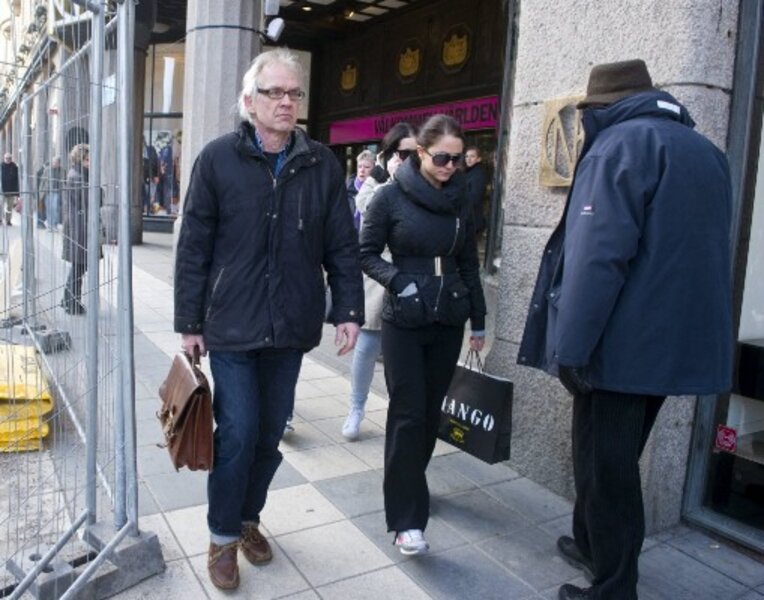Lars Vilks: why some European artists are building panic rooms
Loading...
| Atlanta
Why did Lars Vilks, a mild-mannered Swede who calls himself “the artist,” booby-trap his art with electrified barbed wire, keep an ax by his bedside, and build a panic room upstairs?
For one, Mr. Vilks’s 2007 cartoon of the prophet Mohammed as a stray dog continues to bring death threats and even a bounty on his head from an Al Qaeda-related group in Iraq.
But after US authorities on Tuesday arrested Colleen LaRose, a Philadelphia woman known on the Internet as Jihad Jane, for allegedly planning to travel to rural Sweden and assassinate Vilks, civil libertarians such as George Washington University law professor Jonathan Turley are pointing to another potential incentive for European artists to protect themselves: growing deference shown to Islam by European governments and journalists worried about stoking fanatical flames.
IN PICTURES: American Jihadis
Since various cartoon controversies erupted after 9/11, European governments from Finland to the Netherlands have publicly upheld constitutional ideals of free speech and expression. But those same governments have also prosecuted people under new blasphemy laws intended both to extend legal protections to non-Christians and to calm religious tension in increasingly multicultural Europe.
It's not just Westerners defaming Islam who are being targeted by European governments. Last year, Dutch prosecutors charged the Arab European League under a blasphemy law after it published a cartoon questioning the Holocaust.
While the US Constitution does not allow blasphemy laws, the Obama administration changed policy direction last year when it supported the move by Muslim nations in the United Nations' Human Rights Council to recognize exceptions to free speech when it comes to “negative racial and religious stereotyping.”
“Government prosecutions have quietly worked to chill any speech in the area of religion,” says Mr. Turley. “And I think that’s linked to journalists and artists who are living in fear of being physically attacked or killed. [Would-be terrorists] see Western governments willing to put people in jail for insulting Islam, and that tends to validate their views.”
Vilks himself played down the threat by likening the alleged planned attack to a B-grade Hollywood movie plot. “It’s about the bad guys and a good guy, and they try to kill him,” Vilks told the Associated Press Wednesday. “They have this woman also, which I think is a good part of the plot with this fantastic name, ‘Jihad Jane,’ who is actually doing some scouting there in the surroundings. You have something of a film there, but … I believe they’re a bit low tech.”
His safe room is patterned on a concept that apparently saved Danish cartoonist Kurt Westergaard, who used a similar room to escape an assassination attempt in his home in January. Concern has spread among artists and journalists critical of Islam since the 2004 assassination of Dutch filmmaker Theo van Gogh, a descendant of artist Vincent van Gogh.
Swedish police keep a close watch over Vilks, but he does not have around-the-clock protection. Unlike in the United States, Swedish law does not guarantee citizens the right to protect themselves with firearms.
Even as he builds a fortress, Vilks remains outwardly undaunted by the threat.
"As an artist, you have to take a stand for things. If you do something, you have to take full responsibility for it," Vilks told the Associated Press. "I'm actually not interested in offending the prophet. The point is actually to show that you can. There is nothing so holy you can't offend it."
Patrik Jonsson's Facebook page





